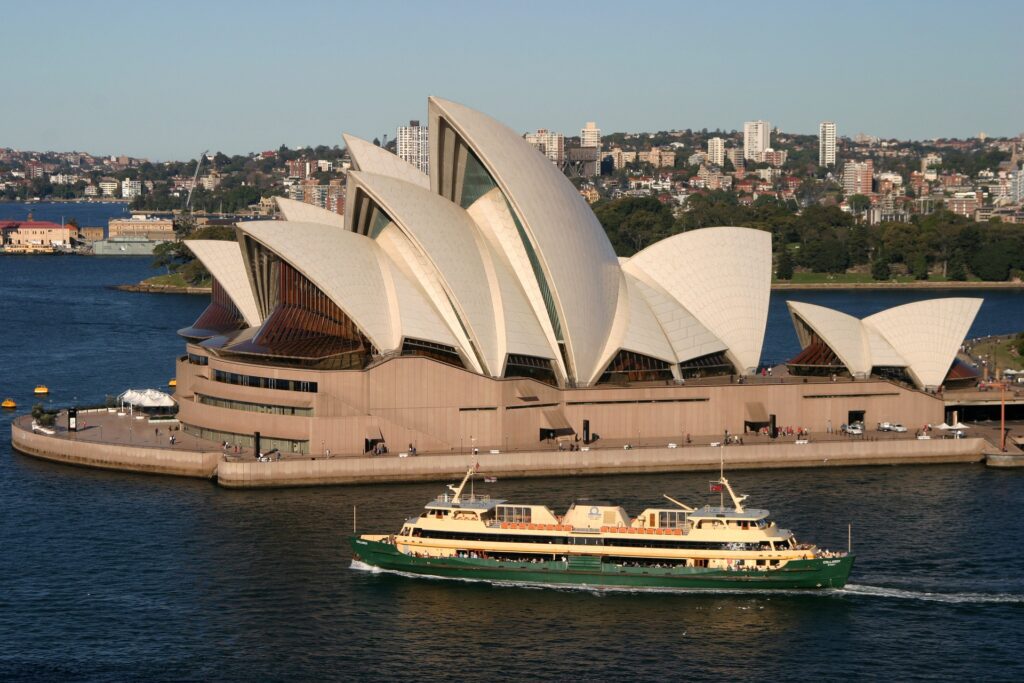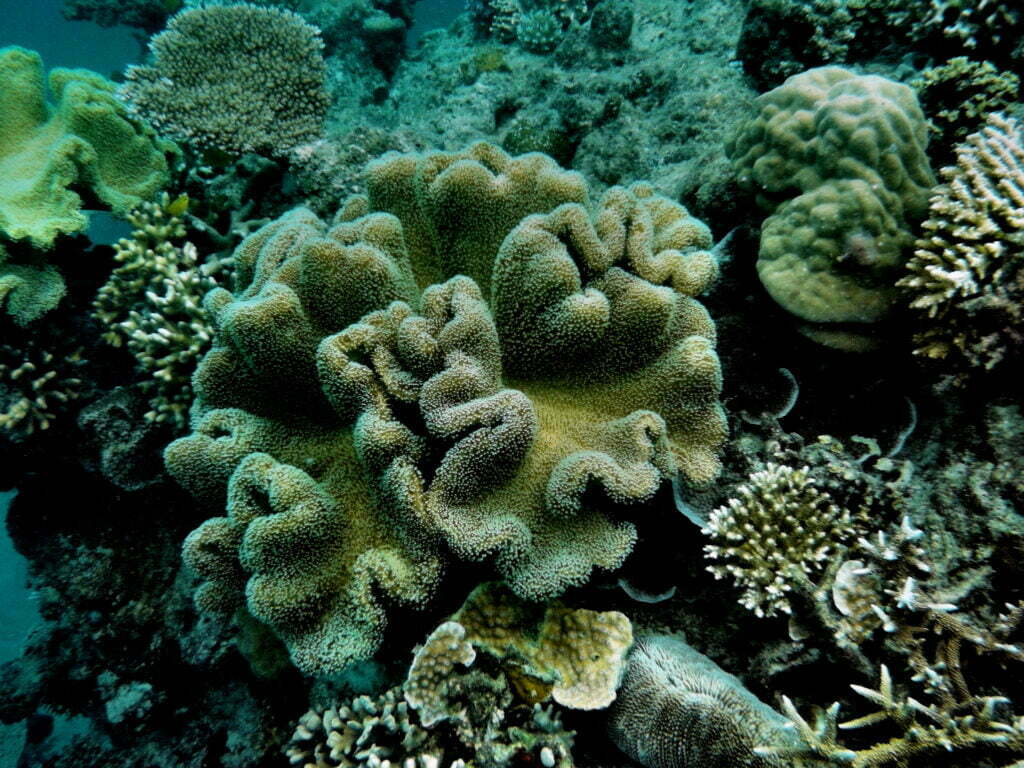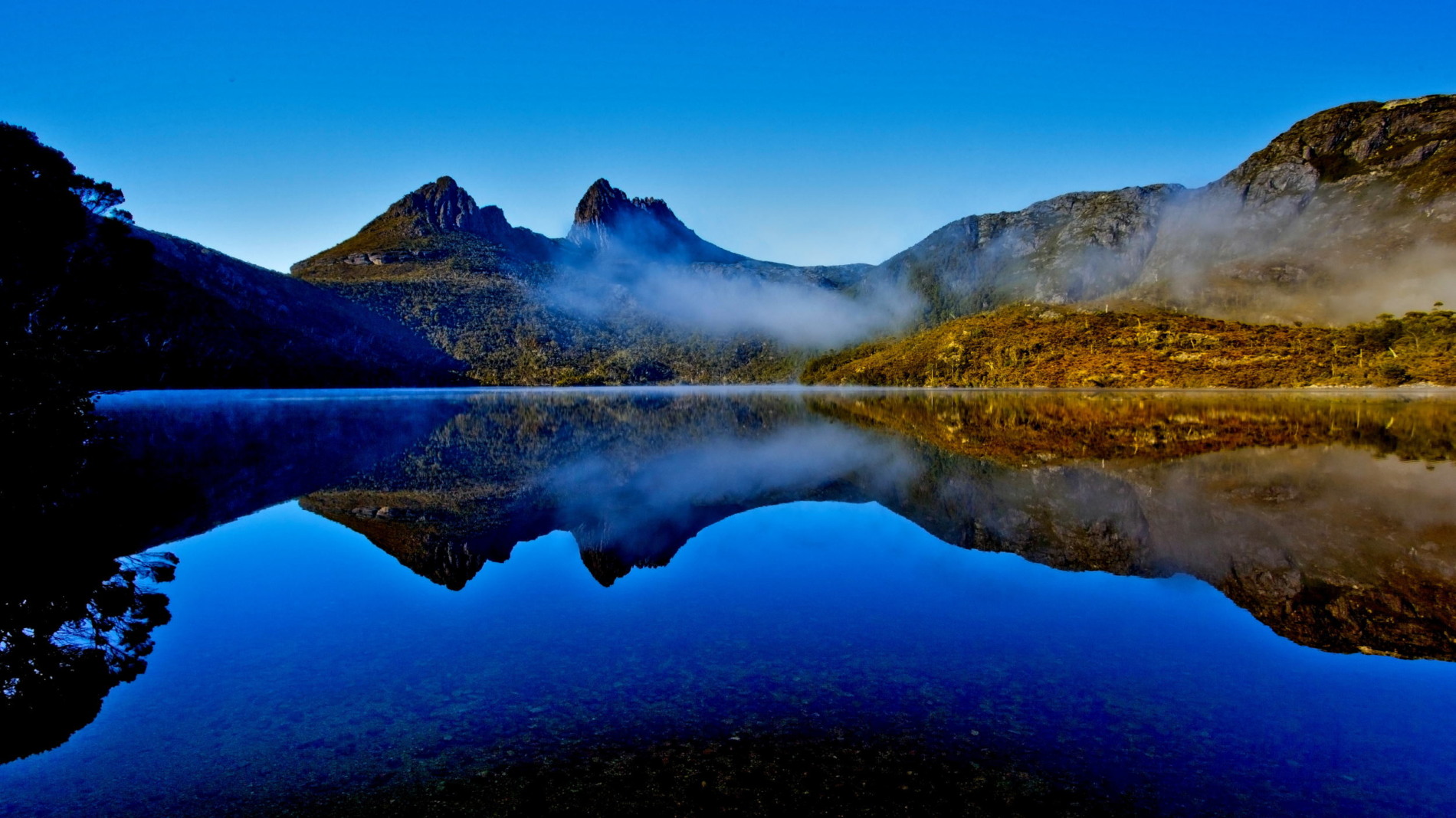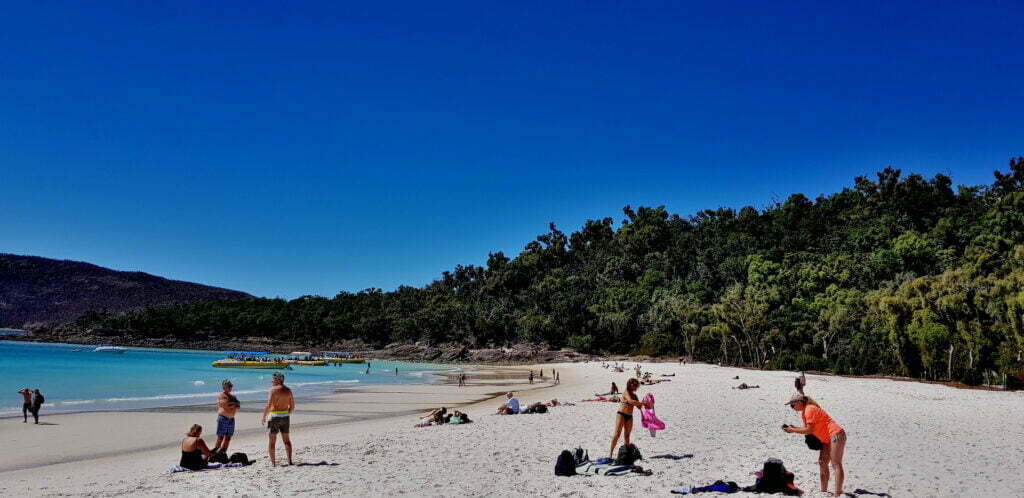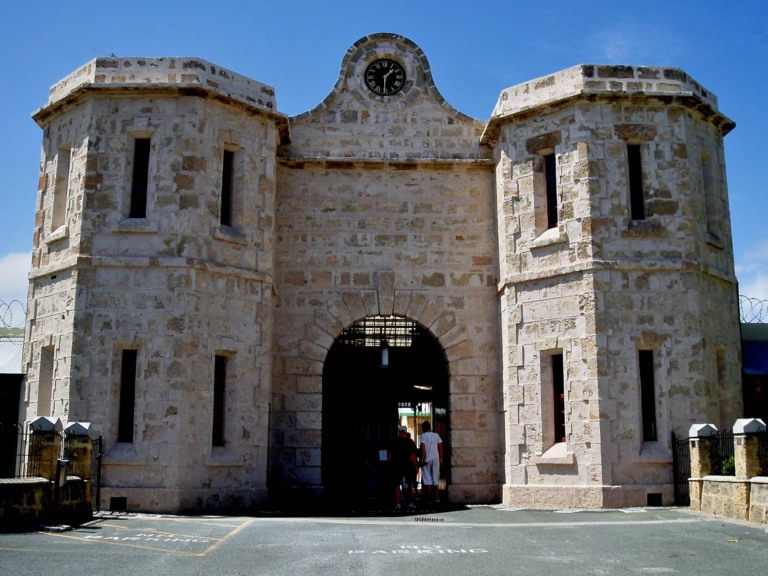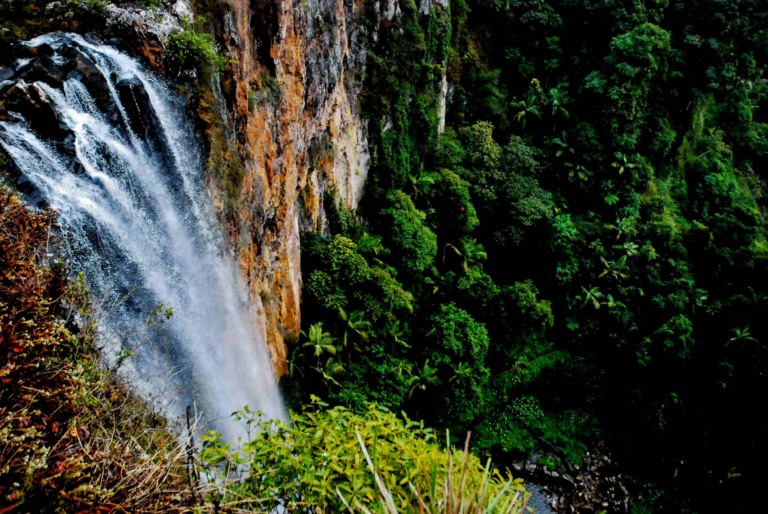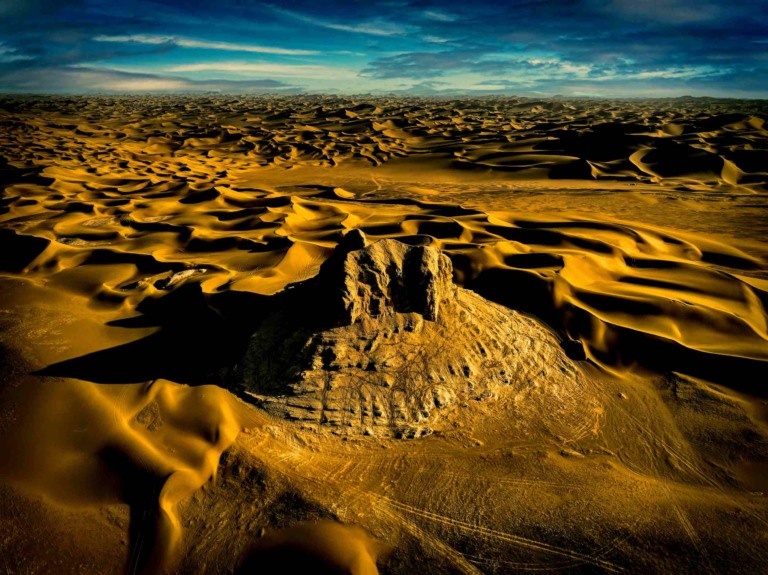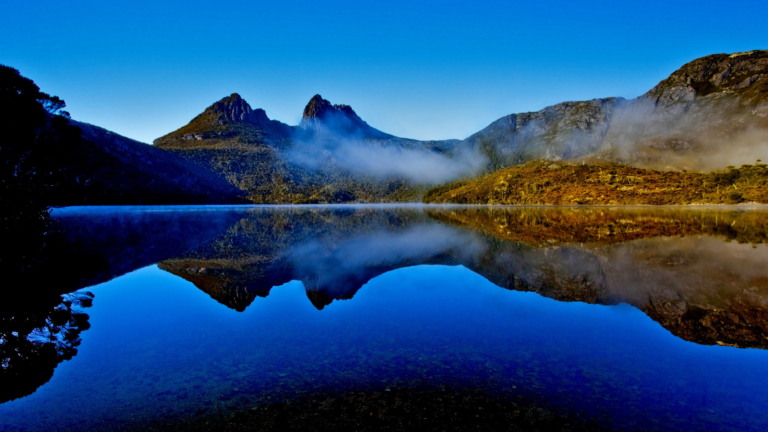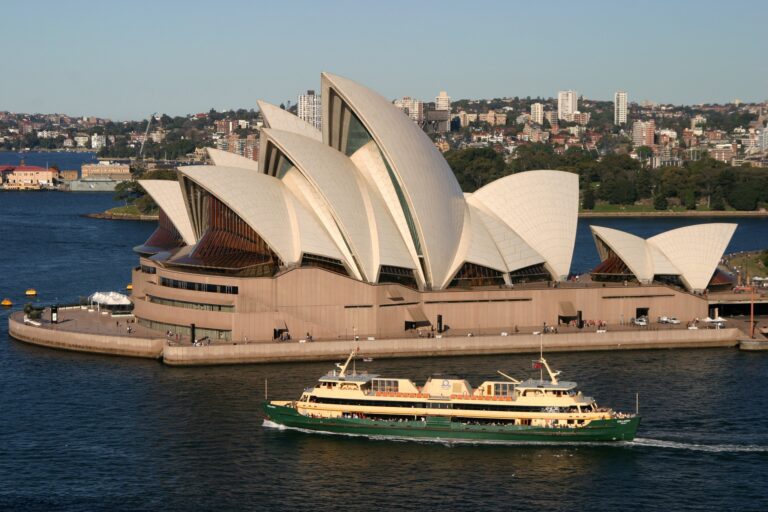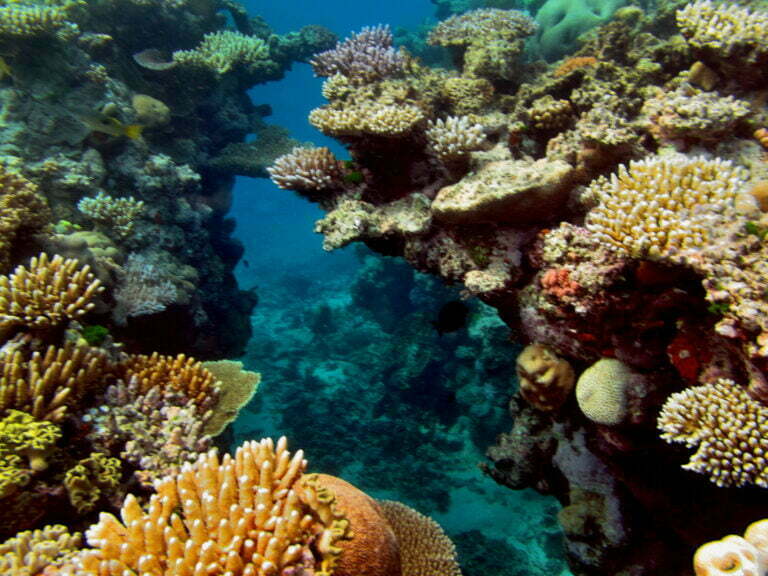20 UNESCO World Heritage Sites in Australia as it is a beautiful landmass with a lot of natural scenery, different types of land and sea life, and a place where elite engineering and development can take place. Australian world heritage sites are twenty. List of World Heritage Sites in Australia, you can’t miss anything—from dazzling coastlines to social and verifiable destinations to geographical miracles.
UNESCO World Heritage Sites in Australia
From ancient Aboriginal sites to tropical jungle wonders, here’s how to visit Australia’s most significant natural and social landmarks. The UNESCO Sites in Australia are some of the world’s most special natural and cultural places. After all, a place has to be really special to make UNESCO’s list.
Sydney Opera House
The Sydney Opera House first opened its doors in 1973. It is a great piece of architecture from the 20th century. Both the way it looks and how it is built show a lot of creativity and innovation. As a great piece of urban art at the end of a peninsula that sticks out into Sydney Harbor, the building has had a lasting effect on architecture.
It is made up of three vaulted “shells” that fit together to cover a restaurant and two main performance halls. The shell-shaped buildings are built on top of a large platform and are surrounded by terraces that serve as walkways. In 1957, a group of people from all over the world chose Danish architect Jorn Utzon for the job.
This changed a lot about how buildings were put together. The Concert Hall is one of the six theaters inside the building. People can see the inside of one of the busiest performing arts centers in the world by going to one of the more than 2,000 shows and events that happen there every year or by taking a guided tour.
Willandra Lakes Region
The Willandra Lakes Region is known for the fossilized remains of a series of lakes and sand formations. There are fossils and other artifacts from the Pleistocene period that can be found in the area that show people lived there between 45,000 and 60,000 years ago. It is a great place to find out about how Australians have changed over time. Giant marsupials have left behind fossils that are still in good shape.
The bones of a woman who lived 40,000 years ago were found in the dunes of Lake Mungo. People think that this is the oldest place in the world where the dead have been burned. In one of the oldest places outside of Africa, people have lived for a very long time. People can walk through the land and see how the Aboriginal people used to live there.
Fraser Island
Fraser Island (K’gari) is right off Australia’s east coast. It is the longest sand island in the world at 122 km. Inland from the beach, you can find beautiful remnants of tall rainforest growing on sand, as well as half of the world’s perched freshwater dune lakes.
It is a unique place because it has moving sand dunes, tropical rainforests, and lakes. Lake McKenzie is the most beautiful natural feature on Fraser Island. The crystal-clear lake is full of rainwater and has pure white silica sand that looks beautiful and is very soft to walk on. It’s the best place to go swimming or have a picnic.
Macquarie Island
Macquarie Island is an island in the Southern Ocean that is 34 km long and 5 km wide. It is 1,500 km south of Tasmania and about halfway between Australia and the Antarctic continent. The island is the top of the underwater Macquarie Ridge that is out in the open. Where the Indo-Australian and Pacific tectonic plates meet is where it got to where it is now.
It is a very important place for geoconservation as it is the only place on Earth where rocks from the earth’s mantle, which is 6 km below the ocean floor, are being actively exposed above sea level. Some of the best examples of pillow basalts and other extrusive rocks can be found in these unique exposures.
The most well-known thing about this place is that it is home to four million penguins, including a colony of royal penguins that can’t be found anywhere else on Earth. But it’s hard to actually see them. People who want to land on the island must get permission first, and park rangers keep an eye on everyone who comes. The best thing to do is to take a tour of the island on one of the cruise ships that are allowed to stop there.
Ningaloo Coast
The Ningaloo Coast is a marine and land area that covers 604,500 hectares. It is on the remote western coast of Australia and has one of the longest reefs near the shore. On land, there is a large karst system, which is a network of underground caves and waterways. Whale sharks get together every year at Ningaloo Coast, which is home to a lot of marine life, including a lot of sea turtles. The part of the site that is on land has underground water bodies and a large network of caves, tunnels, and groundwater streams.
They are home to a wide range of rare species that help make the marine and terrestrial sites so diverse. Whale sharks gather every year from March to August along the Ningaloo Coast, where there is a lot of sea life. People come to the area from all over the world to swim with the gentle giants. Ningaloo Reef is one of the few places on Earth where these huge fish are often seen in big groups.
Great Barrier Reef
The Great Barrier Reef is a place on the northeast coast of Australia that has a lot of different things to see and is very beautiful. It has the most coral reefs in the world. There are 400 kinds of coral, 1,500 kinds of fish, and 4,000 kinds of mollusks. It is also very interesting to scientists as it is home to species that are in danger of going extinct, like the dugong (sea cow) and the large green turtle.
The famous place in Queensland is also a safe haven for many endangered marine mammals and is home to the largest living structure on Earth, which can be seen from space. Dive down and swim with the “Great Eight” iconic species of the Great Barrier Reef: the Clownfish, Giant Clam, Reef Shark, Manta Ray, Humpback Whale, Maori Wrasse, Potato Cod, and Sea Turtle.
Gondwana Rainforests of Australia
The Gondwana Rainforests in Australia are the largest subtropical rainforests in the world. Most of it is along the Great Escarpment on the east coast of the country. Geological features that are only found near craters stand out. It says that the rainforest is important for science and conservation around the world because it is home to many rare and endangered species.
UNESCO says there aren’t many places on Earth where so many plants and animals are mostly the same as their fossil ancestors. There are about 40 different reserves in the Gondwana Rainforest area, which is between Newcastle, New South Wales, and Brisbane, Queensland. They can be as small as a few trees in a gully or as big as thick forests that cover large valleys and mountain ranges.
Shark Bay, Western Australia
Shark Bay, in Western Australia, is the most western point of the continent. With its islands and the land around it, Shark Bay has three very interesting natural features. First, its seagrass beds are the largest and richest in the world. They cover 4,800 km2 and have the most species. Second, it has a lot of dugongs (sea cows). Third, it’s stromatolites, which are colonies of algae that form hard, dome-shaped deposits and are among the oldest forms of life on Earth.
Five types of endangered mammals live in Shark Bay. The Burrowing Bettong, the Rufous Hare Wallaby, the Banded Hare Wallaby, the Shark Bay Mouse, and the Western Barred Bandicoot are the names of these animals. There is a lot to see and do for people who want to see wildlife and natural beauty.
Royal Exhibition Building and Carlton Gardens
The Royal Exhibition Building and the Carlton Gardens around it were built for the big international shows in Melbourne in 1880 and 1888. Joseph Reed planned both the building and the grounds. Brick, wood, steel, and slate are used to build the building. It has parts of the Byzantine, Romanesque, Lombardic, and Italian Renaissance styles. The place is typical of the international exhibition movement.
Between 1851 and 1915, more than 50 exhibitions were held in places like Paris, New York, Vienna, Calcutta, Kingston (Jamaica), and Santiago. All of them had the same theme and goal: to show the material and moral progress of all nations through displays of their industries. The Royal Exhibition Building and the Carlton Gardens, which are close by, are both part of this world heritage site. People like the gardens because they have beautiful flower beds, lakes, and fountains from the 1800s. In the fall, when the leaves change color, it is a great time to go.
Australian Convict Sites
The Australian Convict Sites are a group of eleven prisons. In the 18th and 19th centuries, the British Empire set up thousands of settlements in Australia. Australia is full of these places. It goes from Fremantle in Western Australia to Kingston and Arthur’s Vale on Norfolk Island in the east. Also, from places north of Sydney, New South Wales, to places south of Tasmania.
Over the course of 80 years, about 166,000 men, women, and children were sent to Australia. Between 1787 and 1868, prisoners were sent to the convict colonies by the British government. Each site was there for a different reason. Making people work on building the colony is both a punishment and a way to help them get back on their feet.
These sites show the best examples of how convicts were transported on a large scale and how their presence and work helped European powers expand their colonies. Port Arthur, on Tasmania’s beautiful and quiet Tasman Peninsula, is the most well-known of these convict sites that are on the list of World Heritage Sites. Visitors can now walk through the ruins of prison blocks, solitary cells, churches, worker’s quarters, and some pretty grim prison punishment rooms.
Purnululu National Park
Purnululu National Park is a 239,723-hectare area in the state of Western Australia. It has the Bungle Bungle Range, which is made of quartz sandstone from the Devonian period and is deeply cut. Over 20 million years, erosion turned them into a set of beehive-shaped towers or cones.
These towers or cones have steeply sloping sides that are clearly marked by horizontal bands of dark-grey cyanobacterial crust. Cyanobacteria are single-celled organisms that use light to make food. Several geological, biological, erosional, and climate-related processes work together to make these great examples of cone karst.
The grasslands around the Bungle Bungles are about 300 meters shorter than the Bungle Bungles. One of the best ways to see them is from the air. There are a lot of amazing rock formations in the area, and several tour companies offer flights over them. Take a flight at sunrise or sunset to see the beautiful colors.
Heard And Mcdonald Islands
The Southern Ocean is where you can find Heard Island and McDonald Island. It is about 4,100 km south-west of Perth and 1,700 km from the Antarctic continent. Since they are the only subantarctic islands with active volcanoes, they “open a window into the earth.” So, it’s possible to watch geomorphic processes and glacial dynamics as they happen.
Heard and McDonald is one of the world’s rarest pristine island ecosystems because it has no foreign plants or animals and hasn’t been touched by humans. This makes it an important place to protect. The seals that live on HIMI are also a big draw. Three species breed on the protected islands. But because the islands are so far away and have harsh weather, most people who go there are on scientific research trips. In the past, people have gone to see the seals and other animals for fun or as tourists, but this doesn’t happen very often.
Budj Bim Cultural Landscape
The Budj Bim Cultural Landscape is in south-eastern Australia. It is in the traditional land of the Gunditjmara people. It is made up of three connected parts that make up one of the largest and oldest aquaculture systems in the world. The Gunditjmara used the Budj Bim lava flows to build a complicated system of channels, weirs, and dams to catch, store, and harvest kooyang, also known as the short-finned eel (Anguilla australis).
Six thousand years ago, the Gunditjmara economy and society were built on a system of aquaculture that was very productive. The Gunditjmara tell a deep-time story about how the place came to be. This story shows how the place was made. It means that they’ve lived there since the beginning. From the point of view of archaeology, “deep time” is a period of at least 32,000 years.
Gunditjmara continue to have a dynamic relationship with their land through knowledge systems that are passed down orally and kept alive through cultural practices. Lava flows made channels that the Gunditjmara people used to make a complicated system of eel traps. Here is where they kept the eels and caught them. At Budj Bim National Park, people can still see what’s left of these traps.
Kakadu National Park
Kakadu National Park is a unique place to study history and culture. It is in the Northern Territory, and people have lived there for more than 40,000 years straight. The skills and way of life of the people who used to live in the area are shown by the cave paintings, rock carvings, and archaeological sites. From the early hunters and gatherers to the Aboriginal people who still live there today.
It is a unique example of an ecosystem that is made up of many different parts, such as tidal flats, floodplains, lowlands, and plateaux. There are many rare or endemic species of plants and animals that live in these places. Indigenous art sites in Kakadu include cave paintings and rock carvings. These are important because they show how people have interacted with their environment over tens of thousands of years, including how they lived.
Lord Howe Island Group
The Lord Howe Island Group is a great example of islands in the ocean that were formed by volcanoes and have a unique set of plants and animals. It is also the world’s true coral reef that is the most southern. It is a small area with some of the most beautiful and interesting landscapes in the world. Seabird colonies use the area as an important place to raise their young.
Some of these are important natural habitats for saving endangered species. Some iconic species are endemic, like the Lord Howe Woodhen, which can’t fly and was once thought to be one of the rarest birds in the world. The Lord Howe Island Phasmid, or Dryococelus australis, is another example. This is the largest stick insect in the world.
It was thought to be extinct until it was found again on Balls Pyramid. This group of islands, which includes Lord Howe Island, the Admiralty Islands, the Mutton Bird Islands, and Ball’s Pyramid, is home to many native plants, many of which are only found on Lord Howe Island. There are also colonies of seabirds that are in danger of going extinct, such as the Sooty Tern.
Australian Fossil Mammal Sites (Riversleigh Naracoorte)
Riversleigh and Naracoorte are where you can find fossils of Australian mammals. These are two of the most important fossil sites. They are two of the 10 best fossil sites in the world. Both are in eastern Australia, but one is in the north and the other is in the south. There are great fossils in these places that show how these amazing animals changed over time.
Some of the best and, in many cases, the only examples of groups of mammals from the last 30 million years can be found in these two places. Riversleigh has a great collection of fossils from the Oligocene to the Miocene, which were about 10 to 30 million years ago. The story then moves to Naracoorte, which is more recent. It is one of the best places to look for fossils of vertebrates from the mid-Pleistocene glacial periods to the present day.
It’s the time between 530,000 years ago and now. This record of fossils is important all over the world. It shows how Australia’s mammals have changed over time and how they have adapted to changes in climate and the effects of humans. Paleontologists are the ones who have found the most fossils. After that, most caves were closed so scientists could study them. But people can still visit four Naracoote caves. The National Parks and Wildlife Service can also take you on tours.
Tasmanian Wilderness
The Tasmanian Wilderness World Heritage Area is in an area that has been hit hard by glaciers. Tasmania is one of the states in Australia. It is an island in the Southern Ocean, right next to the continent. With their steep gorges, these parks and reserves cover more than 1 million hectares.
It is one of the last temperate rainforest areas left in the world. People have been living in the area for more than 20,000 years, as shown by the remains found in limestone caves. Tourism is the main industry of the abbreviated TWWHA. The place isn’t very developed, which is partly because of the contrast between development and the idea of pristine nature.
Except for a few small spots on the edges, there are no permanent residents in the area. People come to this place to do things like bushwalking, whitewater rafting, and climbing. You can’t get to Bathurst Harbor by road. But the beautiful sights are well worth the short flight in a small plane to Melaleuca Airstrip and the short boat ride or tour group trip from there.
Uluru-Kata Tjuta National Park
Uluru-Kata Tjuta National Park is where the Anangu people have lived for a very long time. Those people used to live here tens of thousands of years ago. The park is where you can see both Uluru and Kata Tjuta. It has important physical proof that it was home to one of the oldest and most stable cultures in the world. Anangu is the term that Pitjantjatjara and Yankunytjatjara Aboriginal people use.
They are from a part of Australia called the Western Desert. The two main languages spoken here are Pitjantjatjara and Yankunytjatjara. The Tjukurpa is the way the Anangu people have always done things. It is the basis of the Anangu way of life and culture that are connected to this place. The Tjukurpa is a great example of how spirituality and traditional law can work together.
These show how people, plants, animals, and the land itself all work together. It is a protected area in the Northern Territory. It is 1,943 kilometers south of Darwin and can be reached by road. On the Stuart and Lasseter Highways, it is 440 kilometers southwest of Alice Springs. From a geological, historical, and cultural point of view, both of these rock formations are interesting. The Anangu culture has been around for a long time, as shown by the rock art in the caves.
Wet Tropics of Queensland
The Wet Tropics of Queensland are a 450-kilometer-long area on the northeast coast of Australia. It covers about 894,420 hectares and is mostly tropical rainforest. There are parts of the great Gondwanan forest in this place. Between 50 and 100 million years ago, they were all over Australia and part of Antarctica.
The unique marsupials and most of the other animals in Australia came from the rainforests. We can find out something new about how evolution works in general. How these living remnants of the Gondwanan era have changed since then. They also give us important information about fossils of plants and animals found in other parts of the country.
It shows how sclerophyll plants and marsupials have changed over time in different parts of the world. Cape Tribulation is one of the few places on the coast of the world where coral reefs and rainforests meet. The beautiful Daintree is one of the largest, oldest, and most visited rainforest areas.
Greater Blue Mountains Area
The Greater Blue Mountains Area covers 1.03 million hectares. It is made up of sandstone plateaus, cliffs, and gorges, and temperate eucalyptus forests cover most of it. There are eight protected areas that make up this place. It is known for showing how eucalypts changed and grew differently after Gondwana broke up and left them alone on this continent. In the Greater Blue Mountains Area, there are 91 different types of eucalyptus.
It is also remarkable for how well it shows how different structures and ecosystems can work together. It is related to the eucalypts that grow in the many places it lives. With 10% of the vascular flora, the place is a good example of Australia’s wide range of plant life. There are a lot of species that are rare or in danger. It has species that only live there and species that haven’t changed much over time.
Those species, like the Wollemi pine, have stayed alive in very small areas. The Three Sisters in Katoomba are the most well-known part of the Blue Mountains. Every year, more than 2 million people go to Blue Mountains National Park to bushwhack, hike, have a picnic, or ride their mountain bikes. There is also a Heritage Center where you can learn about the Aboriginal history of the area and other things. The scenic cableway that goes down the Jamison Valley is another popular thing to do.
List of World Heritage Sites in Australia
- Australian Convict Sites (2010)
- Budj Bim Cultural Landscape (2019)
- Royal Exhibition Building and Carlton Gardens (2004)
- Sydney Opera House (2007)
- Australian Fossil Mammal Sites (Riversleigh / Naracoorte) (1994)
- Gondwana Rainforests of Australia (1986,1994)
- Great Barrier Reef (1981)
- Greater Blue Mountains Area (2000)
- Heard and McDonald Islands (1997)
- K’gari (Fraser Island) (1992)
- Lord Howe Island Group (1982)
- Macquarie Island (1997)
- Ningaloo Coast (2011)
- Purnululu National Park (2003)
- Shark Bay, Western Australia (1991)
- Wet Tropics of Queensland (1988)
- Kakadu National Park (1981,1987,1992)
- Tasmanian Wilderness (1982,1989)
- Uluru-Kata Tjuta National Park (1987,1994)
- Willandra Lakes Region (1981)
